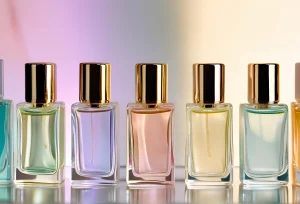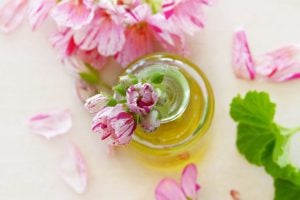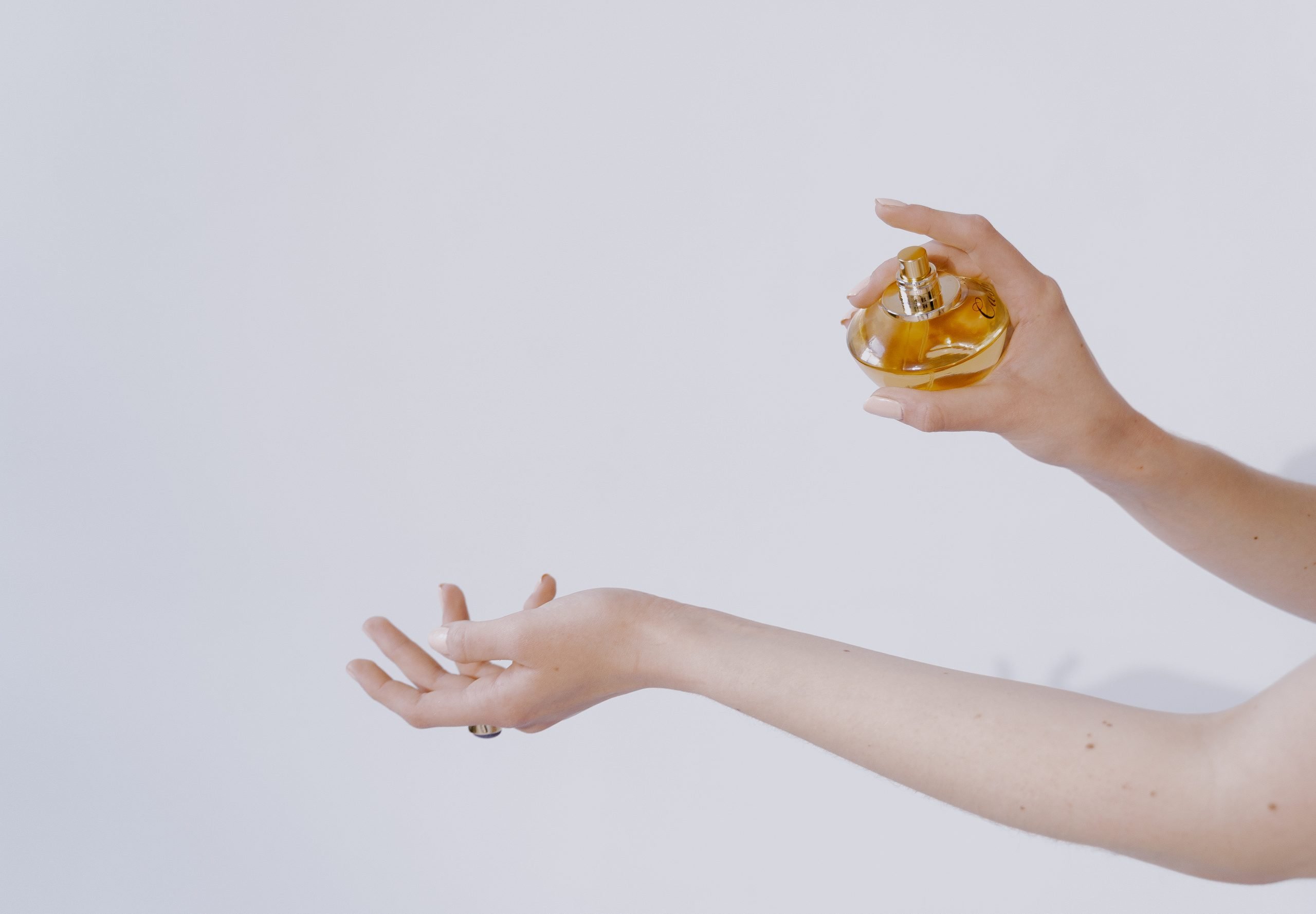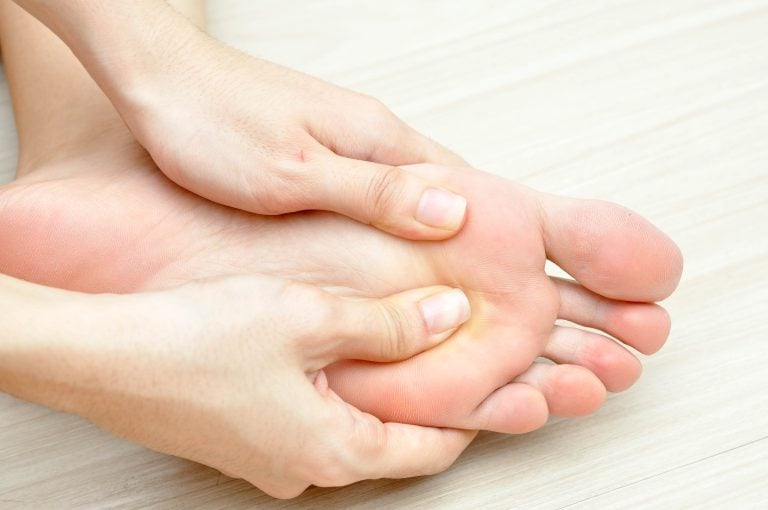The personal care industry is evolving, driven by consumer demand for greater transparency and accountability. More brands are disclosing full ingredient lists and replacing potentially harmful chemicals. Consumer choices are directly contributing to this positive change.
Fragrance (or perfume) is commonly used in personal products but often misunderstood. Although the Food and Drug Administration requires companies to disclose included fragrance, there is no legal obligation to list specific chemicals that make up the scent.1Fragrances in cosmetics. U.S. Food and Drug Administration. Published 2024. Accessed December 2024. https://www.fda.gov/cosmetics/cosmetic-ingredients/fragrances-cosmetics Companies can call numerous different chemicals “fragrance” or “perfume.”2U.S. Congress. S.1289 – Cosmetic Safety for Families Act. Congress.gov. Published 2023. Accessed December 2024. https://ifrafragrance.org/priorities/ingredients/ifra-transparency-list,33,163 ingredients hide behind the word “fragrance.” Environmental Working Group. Published 2024. Accessed December 2024. https://www.ewg.org/news-insights/news/3163-ingredients-hide-behind-word-fragrance This lack of transparency is particularly concerning for people avoiding specific ingredients.
Are fragrance chemicals harmful?

Some studies have linked fragrance chemicals to hormonal imbalance, allergic reactions, skin irritation, and even cancer.4Rádis-Baptista G. Do synthetic fragrances in personal care and household products impact indoor air quality and pose health risks? J Xenobiot. 2023;13(1):121-131. https://doi.org/10.3390/jox13010010 Synthetic musks and phthalates, commonly used in fragrances, are known endocrine disruptors that can affect hormonal health, potentially leading to reproductive issues.4Rádis-Baptista G. Do synthetic fragrances in personal care and household products impact indoor air quality and pose health risks? J Xenobiot. 2023;13(1):121-131. https://doi.org/10.3390/jox13010010,5Basso CG, de Araújo-Ramos AT, Martino-Andrade AJ. Exposure to phthalates and female reproductive health: a literature review. Reprod Toxicol. 2022;109:61-79. https://pubmed.ncbi.nlm.nih.gov/35248714,6Calaf GM, Ponce-Cusi R, Aguayo F, Muñoz JP, Bleak TC. Endocrine disruptors from the environment affecting breast cancer. Oncol Lett. 2020;20(1):19-32. https://doi.org/10.3892/ol.2020.11566 These chemicals may also trigger asthma and other respiratory issues, particularly in people with existing conditions.4Rádis-Baptista G. Do synthetic fragrances in personal care and household products impact indoor air quality and pose health risks? J Xenobiot. 2023;13(1):121-131. https://doi.org/10.3390/jox13010010,7Fragrance. Campaign for Safe Cosmetics. Safecosmetics.org. Published 2024. Accessed December 2024. https://www.safecosmetics.org/chemicals/fragrance
The difference between ‘fragrance free’ and ‘unscented’
For consumers with fragrance sensitivities, it’s important to understand how fragrance free and unscented products differ. These terms are often used interchangeably, but they have distinct definitions:
- Fragrance free: Contains no fragrance ingredients or materials that mask scents.8Fragrance-free criteria. U.S. Environmental Protection Agency. Published 2015. https://www.epa.gov/sites/default/files/2015-02/documents/fragrance-free_criteria.pdf
- Unscented: These products may still contain masking fragrances (to cover up any scent) or synthetic neutralizers, meaning chemicals could be part of the formula.9Safer choice fragrance-free products fact sheet. United States Environmental Protection Agency. Published October 2016. Accessed December 2024. https://www.epa.gov/sites/default/files/2016-10/documents/saferchoice-factsheet-fragrancefree_0.pdf
Essential oils: benefits and concerns

Essential oils are concentrated plant extracts with therapeutic and fragrant effects. While they offer various topical benefits, such as soothing inflammation and improving skin hydration, they must be used carefully. In high concentrations or without proper dilution, essential oils can irritate skin, trigger allergic reactions, and even disrupt hormonal balance.10Chemicals in lavender and tea tree oil appear to be hormone disruptors. Endocrine Society. Published 2018. Accessed December 2024. https://www.endocrine.org/news-and-advocacy/news-room/2018/chemicals-in-lavender-and-tea-tree-oil-appear-to-be-hormone-disruptors,11Gnaneswaran T, Fotouhi A, Lynam K, Utz S, Daveluy S. Essential oils in dermatology. J Integr Derm. 2025 Apr. https://www.jintegrativederm.org/article/136390-essential-oils-in-dermatology
Some essential oils, like lavender or tea tree oil, are widely recognized for their calming and healing properties. However, others may cause adverse reactions, especially for those with sensitive skin, allergies, or during pregnancy.
Choosing products with fragrance or essential oils
- Look for products that display all ingredients on the label, including fragrances or essential oils.
- If you are sensitive to fragrances, select fragrance-free or fragrance free–certified products.
- Avoid products with potent essential oils or check safety guidelines if you have sensitive skin or are pregnant.
- Always review the ingredients and directions for use. Even unscented products may contain a masking fragrance.
Is alcohol bad for your skin?
Alcohol, as described by the FDA, is “a large and diverse family of chemicals, with different names and a variety of effects on the skin.”12Alcohol-free. U.S. Food and Drug Administration. Published 2024. Accessed December 2024. https://www.fda.gov/cosmetics/cosmetics-labeling-claims/alcohol-free Alcohol-free products appeal to consumers seeking formulations that won’t dry out or skin. However, “alcohol free” only means a product includes no drying alcohols. Ethanol, denatured alcohol, and isopropyl alcohol are drying alcohols. They are often used as solvents or preservatives, and some may cause dryness or irritation.13Cartner T, Brand N, Tian K, et al. Effect of different alcohols on stratum corneum kallikrein 5 and phospholipase A2 together with epidermal keratinocytes and skin irritation. Int J Cosmet Sci. 2017 Apr;39(2):188-196. https://doi.org/10.1111/ics.12364
Derived from plant or animal fats, fatty alcohols like cetyl alcohol and stearyl alcohol act as emollients or emulsifiers. They help hydrate and soften the skin.
Buying skincare with alcohols
- Consider your skin type. Choose products that control oil or add additional moisture, depending on your need.
- Look for alcohol-free alternatives. Hydrating alternatives such as glycerin, aloe vera, and hyaluronic acid provide moisture without the drying effects of alcohol.
- Check the order of ingredients. If alcohol appears lower on the ingredient list, it may be used in smaller or less concentrated amounts than other included ingredients.
Building a safe products toolkit
Start with a product you regularly use. Read the full ingredient list and look up anything unfamiliar. Take time to research potentially harmful ingredients like fragrances, preservatives, and alcohols. Then decide whether the product should stay based on what you’ve learned.
If you replace a product with something new, track any reactions, benefits, or concerns over the first few months. You’ll find patterns in specific ingredients that are gentler and generally more effective.
Always verify brand claims by checking certifications, ingredient sources, and company practices.
Footnotes
- 1Fragrances in cosmetics. U.S. Food and Drug Administration. Published 2024. Accessed December 2024. https://www.fda.gov/cosmetics/cosmetic-ingredients/fragrances-cosmetics
- 2U.S. Congress. S.1289 – Cosmetic Safety for Families Act. Congress.gov. Published 2023. Accessed December 2024. https://ifrafragrance.org/priorities/ingredients/ifra-transparency-list
- 33,163 ingredients hide behind the word “fragrance.” Environmental Working Group. Published 2024. Accessed December 2024. https://www.ewg.org/news-insights/news/3163-ingredients-hide-behind-word-fragrance
- 4Rádis-Baptista G. Do synthetic fragrances in personal care and household products impact indoor air quality and pose health risks? J Xenobiot. 2023;13(1):121-131. https://doi.org/10.3390/jox13010010
- 5Basso CG, de Araújo-Ramos AT, Martino-Andrade AJ. Exposure to phthalates and female reproductive health: a literature review. Reprod Toxicol. 2022;109:61-79. https://pubmed.ncbi.nlm.nih.gov/35248714
- 6Calaf GM, Ponce-Cusi R, Aguayo F, Muñoz JP, Bleak TC. Endocrine disruptors from the environment affecting breast cancer. Oncol Lett. 2020;20(1):19-32. https://doi.org/10.3892/ol.2020.11566
- 7Fragrance. Campaign for Safe Cosmetics. Safecosmetics.org. Published 2024. Accessed December 2024. https://www.safecosmetics.org/chemicals/fragrance
- 8Fragrance-free criteria. U.S. Environmental Protection Agency. Published 2015. https://www.epa.gov/sites/default/files/2015-02/documents/fragrance-free_criteria.pdf
- 9Safer choice fragrance-free products fact sheet. United States Environmental Protection Agency. Published October 2016. Accessed December 2024. https://www.epa.gov/sites/default/files/2016-10/documents/saferchoice-factsheet-fragrancefree_0.pdf
- 10Chemicals in lavender and tea tree oil appear to be hormone disruptors. Endocrine Society. Published 2018. Accessed December 2024. https://www.endocrine.org/news-and-advocacy/news-room/2018/chemicals-in-lavender-and-tea-tree-oil-appear-to-be-hormone-disruptors
- 11Gnaneswaran T, Fotouhi A, Lynam K, Utz S, Daveluy S. Essential oils in dermatology. J Integr Derm. 2025 Apr. https://www.jintegrativederm.org/article/136390-essential-oils-in-dermatology
- 12Alcohol-free. U.S. Food and Drug Administration. Published 2024. Accessed December 2024. https://www.fda.gov/cosmetics/cosmetics-labeling-claims/alcohol-free
- 13Cartner T, Brand N, Tian K, et al. Effect of different alcohols on stratum corneum kallikrein 5 and phospholipase A2 together with epidermal keratinocytes and skin irritation. Int J Cosmet Sci. 2017 Apr;39(2):188-196. https://doi.org/10.1111/ics.12364





